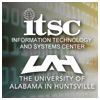Integrated Geospatial Distribution Systems for Disaster Event Data
| Title | Integrated Geospatial Distribution Systems for Disaster Event Data |
| Publication Type | Poster |
| Year of Publication | 2017 |
| Authors | Ebersole, S |
| Secondary Authors | Keiser, K |
| Conference | Geological Society of America Southeastern Conference |
| Date Published | 03/2017 |
| Conference Location | Richmond, VA |
| Keywords | ED3, event-driven, NASA |
| Abstract | During disasters, geospatial data are collected and produced by many responding entities, including, but not limited to, government agencies, volunteer organizations, businesses, and researchers. Although separate entities, these cross-disciplinary datasets address multiple facets of the same situation. If the data are shared on a public access sharing and distribution platform, those integrated multidisciplinary data provide a stronger, more comprehensive, common operation picture that will support response decision making. One example scenario of separately produced, yet beneficial, geospatial event data is geohazards map data and emergency management agency (EMA) plan data following a large storm. Emergency managers may aid communities by setting up disaster response centers (DRCs), and geologists may map slope stability to identify potential landslides. These two activities produce separate map products. However, if an EMA plans placement of a DRC at the base of a hill, and without prior knowledge of slope stability problems, that DRC may be poorly placed. Systems that allow geospatial data sharing as in this example, strengthen communication across disciplines. Online geospatial data integration systems allow multiple agencies, researchers, and the public to upload and view geospatial data and map products. Such systems include the USGS’ Hazard Data Distribution System, ArcGIS Online, GeoCollaborate (a product of StormCenter.com), and the Event Driven Data Delivery (ED3) system. The ED3 system, identifies, collects, tasks, and generates disaster event data, packaged as an event album that can be provided in a GeoRSS feed. This event album feed can integrate with online mapping tools such as ArcGIS Online, Google Earth, or GeoCollaborate to view event data produced by their organization or others. With NASA Applied Science Program funding, the Information Technology and Systems Center, Global Hydrology Resource Center, and Atmospheric Science Department at the University of Alabama in Huntsville are collaborating with the Geological Survey of Alabama on the ED3 project. By contributing to response efforts in a multidisciplinary data sharing approach, more comprehensive situation reviews can be made, leading to better response decisions for multiple entities. |




